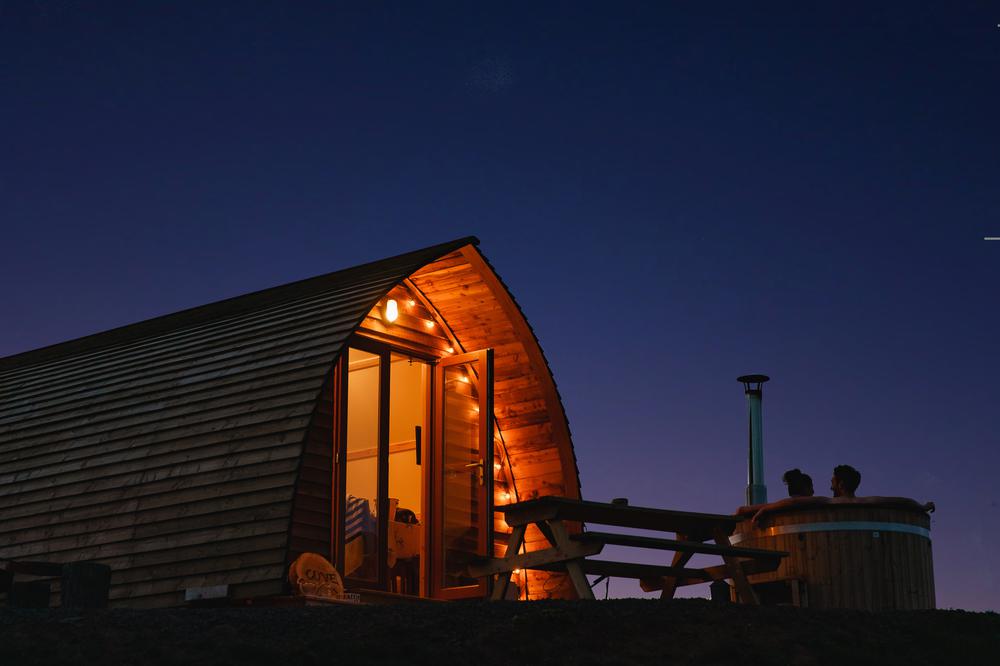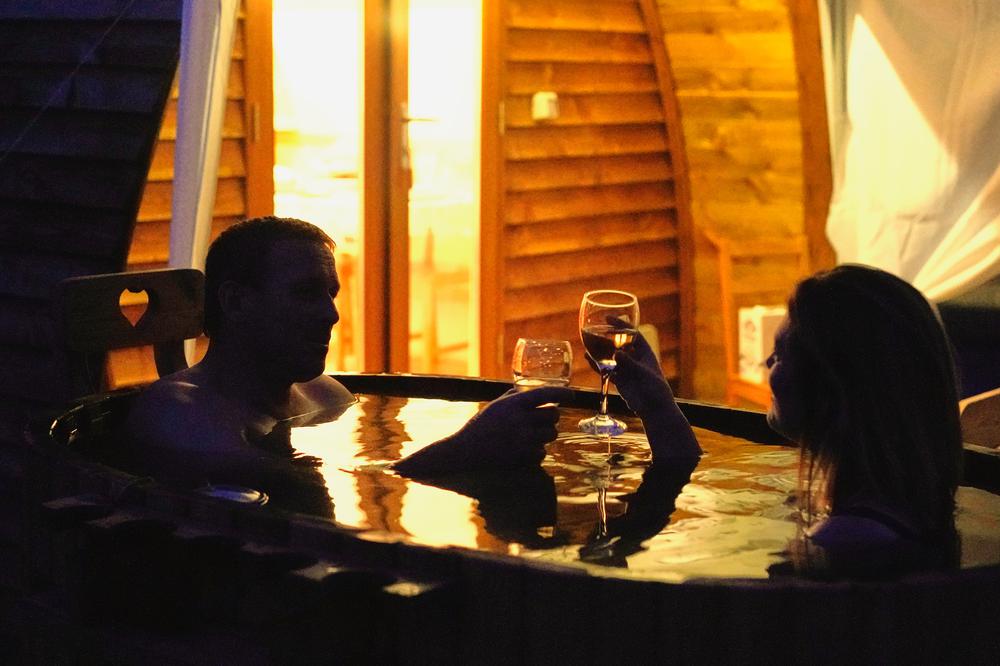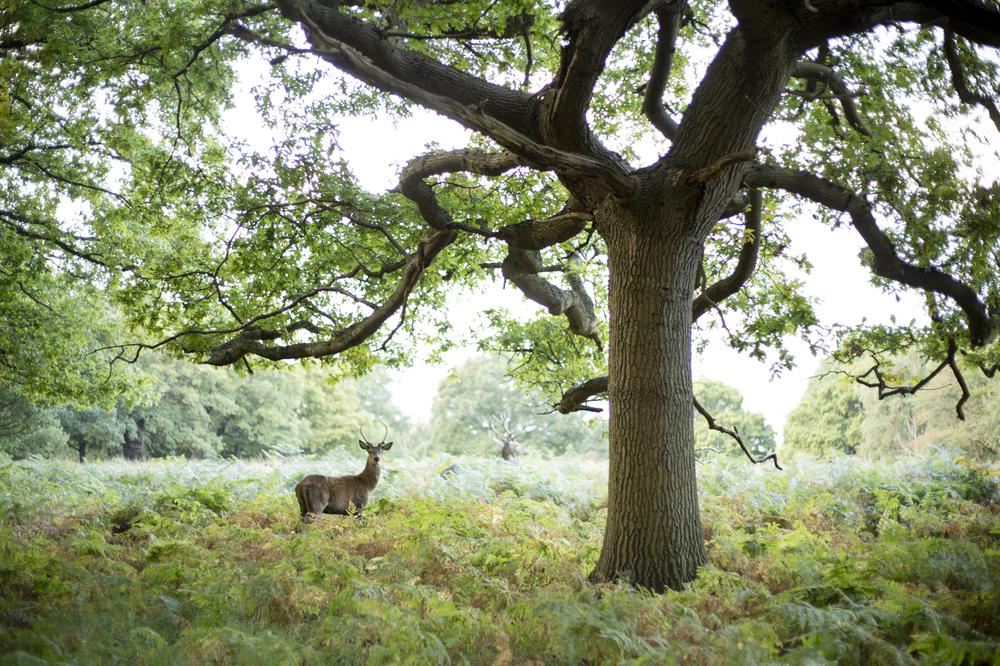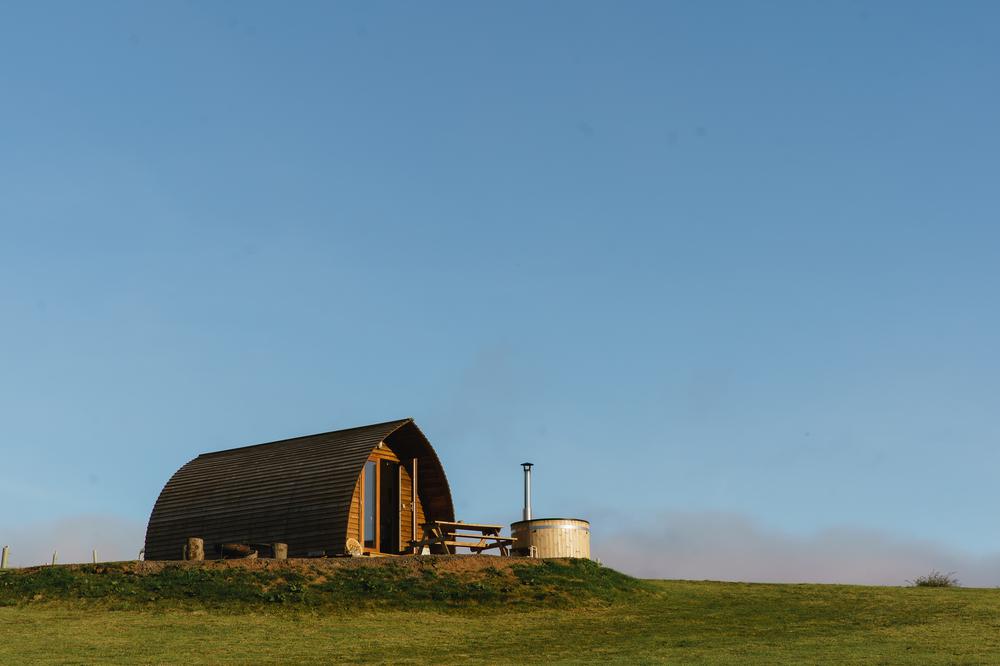
Eco Camping & Glamping - 5 Tips for Sustainable Travels
Our planet is in trouble, and all of us should try our best to protect the natural world that surrounds and sustains us. With this in mind, today we’ll share some of our top tips for eco camping and glamping so that your next holiday in the great outdoors can be as sustainable as possible. We’ll also compare traditional camping and glamping in terms of their eco-friendliness so you can make the right choice for you.

1. Buy second hand & care for your gear
Whether it’s camping gear or something like hiking boots, you’ll do your bank account and the environment a favour by shopping second hand. For camping gear, try searching Gumtree and Facebook Marketplace for deals near you. For outdoor clothing, apps like eBay, Vinted and Depop can come in handy. You can access some great savings this way, as plenty of people ist unused items at a discount.
If you are buying something new, invest in quality. Think of it in terms of cost per use: good quality hiking boots can last you a lifetime when cared for properly, while you’ll be lucky if you get a full season of use out of very cheaply manufactured shoes that then end up in landfill.
And speaking of caring for your gear properly, when you come home from camping or glamping, show your stuff some TLC. Brush mud off shoes, hang the tent up to dry, and store everything properly to prolong the life of your camping gear.
2. Travel by public transport
When it comes to eco camping, sustainable choices start before you even step foot on your camping or glamping site.
While the most tranquil and beautiful camping and glamping sites tend to be a bit more secluded, plenty of them can still be reached by public transport, which is more eco-friendly than driving. You could also look into cycling to a nearby site for a bit of a challenge, or consider ride-sharing.
When you choose glamping, you also need to pack far less stuff, making travelling to your holiday site by bus or train more comfortable. So no bundling up your rucksack and tent under your seat during rush hour!
On our Locations page, you can filter results based on whether the site is accessible by bus or railway.

3. Consider travelling in the off-season
Tourism during peak season can put a lot of strain on nature in famous UK beauty spots. Travelling in the off-season means easing some of this strain - and you benefit from a quieter campsite and unique travel memories. Staying in a cosy, heated glamping pod means you won’t have to worry about getting cold even in winter.
4. Eat sustainably
What we eat has a big impact on the environment. An eco camping trip gives you a good chance to try some veggie campfire cooking since the meat and dairy industry produces roughly as much carbon emissions as all transport combined. Another benefit of eating veggie while camping is not having to worry as much about food-borne illnesses that failing to store or cook meat properly can expose you to.
Many of our glamping sites have farm shops that sell local produce, meat, dairy and eggs. Opting for these is not only a culinary experience, but it’s also more eco-friendly than food imported from elsewhere. For food you’re bringing with you, opt for reusable containers when possible.
On a related note, make sure to cook your meals on a fire pit rather than building a fire yourself as this can cause a risk to your surroundings as well as yourself. All Wigwam sites offer fire pits to visitors.

5. Take nothing but pictures, leave only footprints
Leave no trace is the law of the land when it comes to eco camping and glamping. Not only is trash an eyesore to other people who want to enjoy the great outdoors - it poses a risk to local flora and fauna.
When hiking, leaving no trace also means not wandering off the trail, as this can compact the ground, destroying moss and lichen and making it difficult for delicate plants to grow.
You should also aim not to disturb animals with loud noises or by approaching them - especially so during mating season or when they’ve had their young. When it comes to foraging, make sure you know what you’re gathering in order to avoid picking anything endangered, take only as much as you need, and leave plenty behind for wildlife that relies on it as a food source to munch on.
A good rule of thumb is to leave your campsite better than you found it - so pick up any stray gum wrappers and bottle caps that previous campers may have missed.
Camping vs. glamping sustainability
One of the big benefits of glamping over camping in terms of sustainability is that choosing a glamping pod or something similar as your accommodation means not having to buy camping gear. If you’re not planning on camping regularly, investing in a tent, camping stove, sleeping bag and so on can be hard for both your wallet and the environment.
On the other hand, when you choose Wigwam Holidays, your camping pod will be heated, and you can choose one with running water. These, of course, take energy, so a glamping trip with us is not completely “off the grid”. That being said, some of our sites are partially or fully powered by renewable energy.

Campsites vs. wild camping
Wild camping can be an exciting prospect, but you do have to be extra mindful if you choose that option. At a campsite, you’ll have access to bathroom and kitchen facilities, and many offer recycling alongside bins for household waste.
Out in the wild, you have to figure out what to do when “nature calls”, what to do with grey water from washing up, and how to store and transport all of your rubbish. At a campsite, you can also be certain you’re not bothering any vulnerable wildlife or vegetation. Eco camping is definitely possible when wild camping, but takes some research.
The bottom line
At the end of the day, eco camping can easily take place in a tent or a glamping pod as long as you make mindful choices and take care of your surroundings. If you’d like to learn more about the glamping experience with Wigwam Holidays, check out our Inspiration page and browse through our 80+ UK glamping sites.

